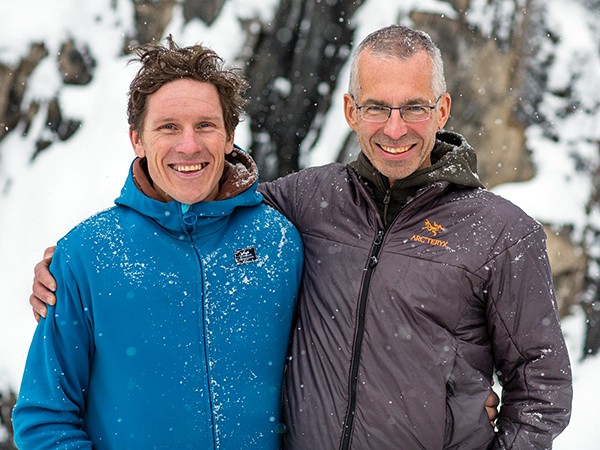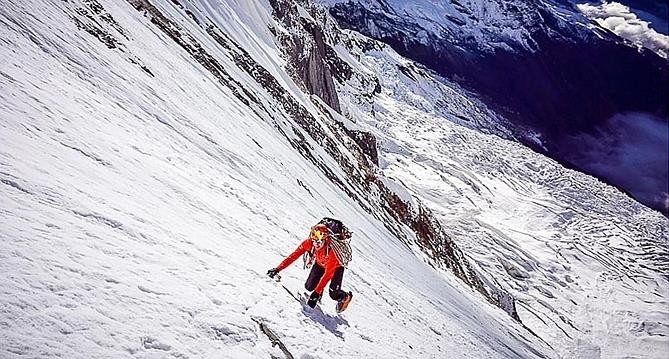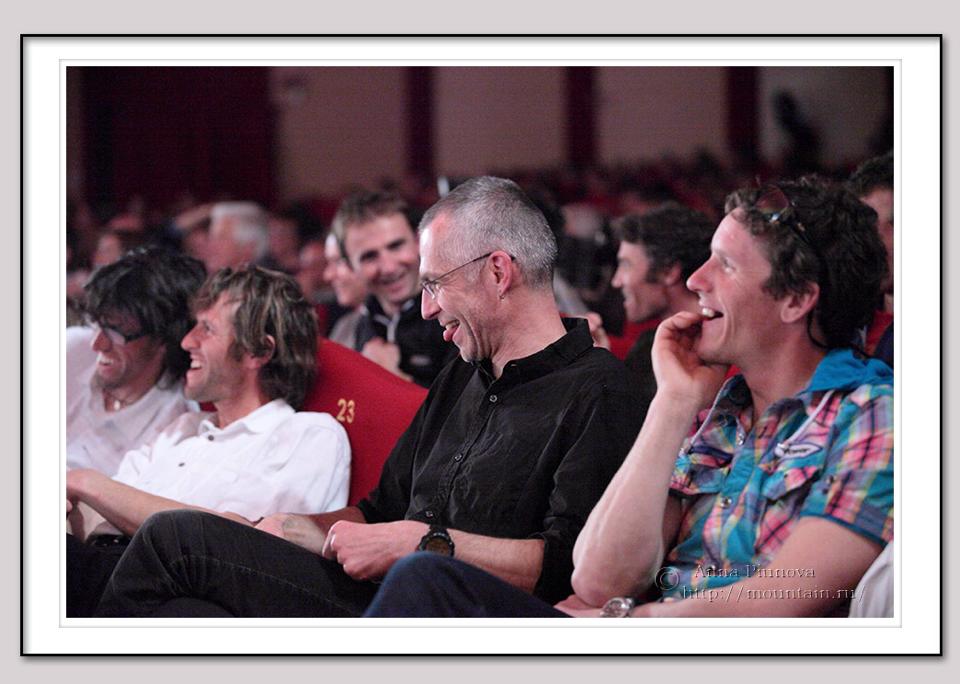Canadians Win 2014 Piolets d’Or

Canadians Ian Welsted and Raphael Slawinski, along with Swiss alpinist Ueli Steck, have won the 2014 Piolets d’Or.
The Piolets d’Or jury has come to a decision based on the Piolets d’Or charter. The technical committee of the Piolets d’Or provided a list of over 70 significant ascents completed around the world in 2013 that more or less met the Piolets d’Or criteria for ethical climbing. The jury and the technical committee spent many days trying to choose the most representative of those 70, and finally narrowed the list down to five nominees plus one special mention. Because there are many facets of exploratory mountaineering, it was very difficult to choose the final nominees. There were a least 10 more ascents that might well have made the final list. A different jury might have made different choices for the final nominees, and indeed different choices for the final awards.
The jury believes that all the nominations should be celebrated as representing the highest ethical ideals of mountaineering. Final deliberations of the jury took several hours. The jury selected two very different ascents to represent the spirit of modern mountaineering, and the various aspects of the ethical charter of the Piolets d’Or. The jury also decided in favour of a special mention.

Altitude 7,040 m, 1,800 metres of climbing, WI 4+, M6+, six days of climbing.
K6 West was a previous unclimbed summit and the target of several earlier attempts. Raphael Slawinski and Ian Welsted were confronted with difficult technical climbing including an overhanging ice crux. On the fourth day they realized they couldn’t continue on the ridge as it turned out to be a knife edge of smooth granite. After careful consideration they found another possibility, rappelling to a glacial bench on the south side and climbing back up the ridge above the unclimbable section to continue to the summit.
Their expedition also is a wonderful example of consideration of the welfare of the local people. After they received the news of the massacre at Nanga Parbat, they decided to continue their expedition as it would be a disaster for the Pakistan people to lose all their income from tourism. On the contrary Welsted and Slawinski want to encourage other mountaineers not to paint all Pakistanis with the same brush.

Altitude 8,091 m, 2,500 metres of climbing, M4/M5, up to 85 degrees, 28 hours of climbing.
After reaching the bergschrund, Ueli Steck had to accept that his climbing partner thought the risk too high. In climbing the face alone, Steck subjected himself to maximum exposure. Despite not knowing what was awaiting him above 6,500 metres, he managed to complete the unfinished route of Pierre Béghin and Jean-Christophe Lafaille (of 1992). Achieving a first ascent on this wall, climbing alone, in very rapid alpine style seems to be a new dimension in high altitude climbing.
The ascents chosen represent two extremes in the management of risk. Slawinski and Welsted planned their ascent on K6 West carefully, timed it in a way to have the best conditions on the wall (starting before the good weather, with fresh neve to minimize rock fall and climbing difficulties) and planned their days so they could get enough rest at bivouacs to maintain strength. After the difficult approach through the glacier they chose the safest, most esthetic line through the wall. Only during the last part of their descent did they face rockfall due to the melting snow.
In contrast in soloing the south face of Annapurna Steck accepted great risk. For 28 hours he maintained absolute concentration, knowing that one false step would cause his demise. Steck described himself as climbing very close to his limit. Nevertheless Steck minimized the remaining risk: he took advantage of unique optimal ice conditions over the rock band, he decided to climb during the night to minimize rockfall and take advantage of lower winds, and he decided to continue only as long as he felt able to climb down. He knew he had to descend the rock band before the sun came out – if the neve covered passages melted, it would be very difficult to descend.
Having in mind that the other three ascents are outstanding achievements, too, the jury feels that the first ascent of K6 West and the solo ascent of the Annapurna South Face are, in their own way, representative examples of the state of the art of mountaineering today.

Special Mention:
Annapurna South Face Second Ascent
The jury decided to award a special Brotherhood of the Rope mention for the second ascent of the Steck route by Stephane Benoist and Yannick Graziani. They found much more difficult conditions (M5+/M6) through the rock band due neve melt since the Steck ascent forcing these two accomplished climbers to spend from 16-26 October on the face. Stephane fell ill high on the face, making the descent very difficult. None the less, they managed to return alive, demonstrating that a partnership can be greater than the sum of its parts.



